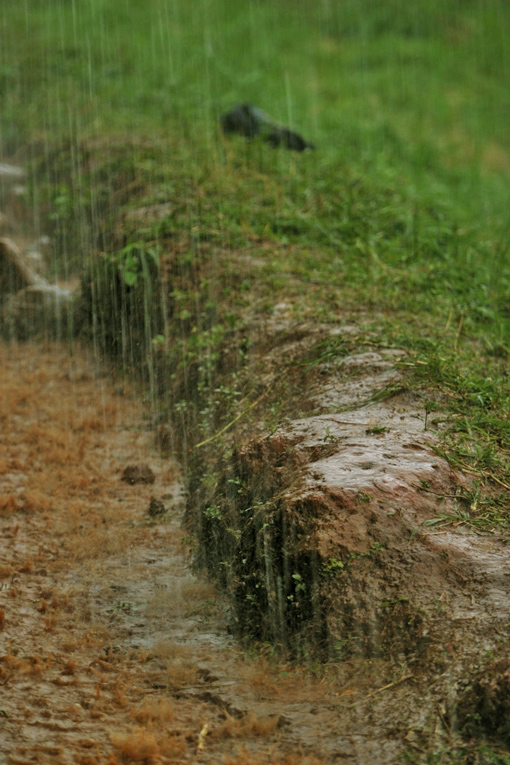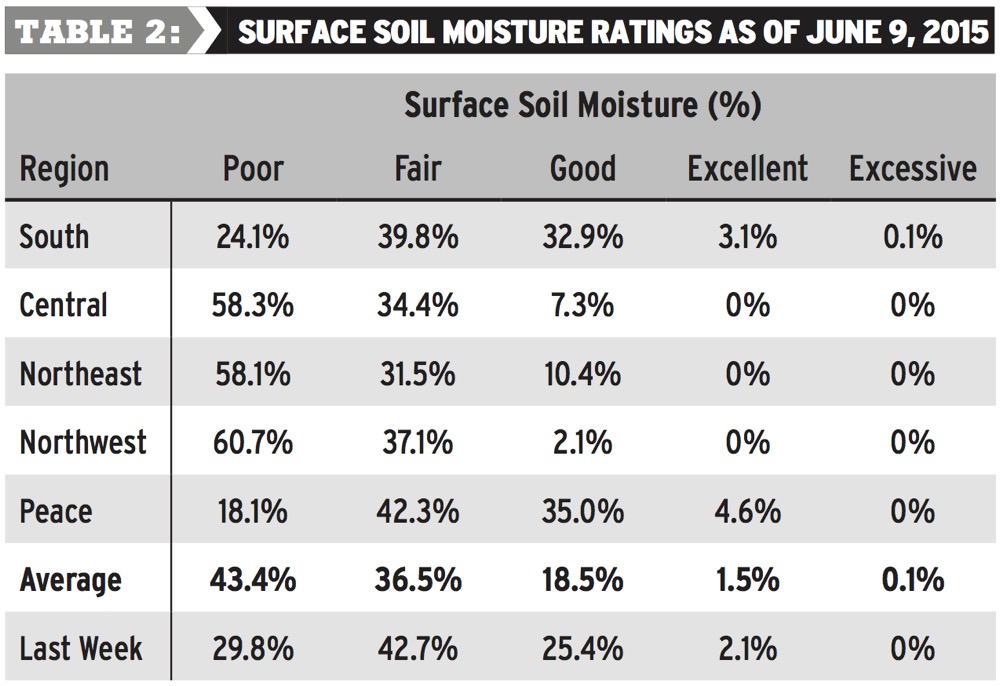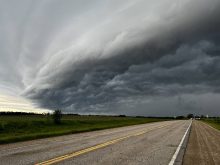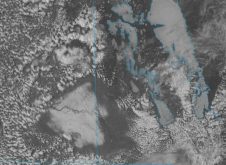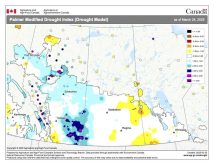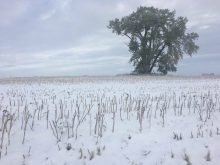The conditions across Alberta can be summed up in three words: It’s awfully dry.
“As of Tuesday, we’ve been getting some moisture here in central Alberta, which has been a nice break, but I don’t know how general that moisture has been,” AFSC risk analyst James Wright said in an interview June 12. “We haven’t had much for moisture all spring. Since the snow left, it’s been pretty dry.”
The following weekend brought a smattering of rain and showers in parts of the province, but not the good soaking that so many areas need.
Read Also

Thunderstorms and straight-line winds
Weather columnist Daniel Bezte discusses the strength of straight-line winds during a thunderstorm and the damage they can cause.
In an Alberta Crop Conditions report released June 9, almost half (43 per cent) of the province reported poor surface soil moisture levels. Those levels are “particularly bad around Edmonton,” Wright said from his Agriculture Financial Services Corporation office in Lacombe.
“They’ve got the highest amount of the poor and fair conditions, but we’re pretty bad here too in central Alberta,” he said.
But one of the hardest-hit areas is the north Peace, where moisture levels have been low for the past three years.
- More Alberta Farmer: The damage to crops is done – but how much worse will it get?
Despite the low surface soil moisture levels, deep-seeded field crops are doing “reasonably well — probably about as well as you could expect,” said Wright.
“You’re able to plant those down into moisture,” he said. “You’re planting those at two to 2-1/2 inches, so you can get those into moisture and they can get a reasonable start.”
It’s a bit worse for the shallow-seeded crops, but not much.
“You have to seed those at an inch or less deep, so you’re into the dry soil conditions. They’re a little more dicey, but still not too bad for the time being.”
The pastures, on the other hand, are doing “real, real bad.”
“They’ve really been taking a pounding from the heat and the dry weather,” said Wright, noting an early-June heat wave “really dried things out.”
That had 49 per cent of farmers reporting poor pasture conditions and hay crops are facing “significant damage.”
“We’re about what would normally be two weeks away from starting first-cut hay, and basically everywhere in the province that’s not irrigated is going to have a very short crop on this first cut.”
Despite the dry conditions, Wright isn’t overly worried about the crops yet.
“Farmers here have become very good at being able to manage soil moisture. I think we can get through this year, even if we didn’t get a lot of rain, with a slightly below-average crop.”
He estimated it would take two more dry years before conditions were as bad as the punishing drought of 2002.
And aside from praying for rain, there’s “not an awful lot we can do” to manage these dry conditions, he added.
“That’s one thing about farming — you’re at the beck and call of Mother Nature. Whatever she deals you, you have to deal with.”

